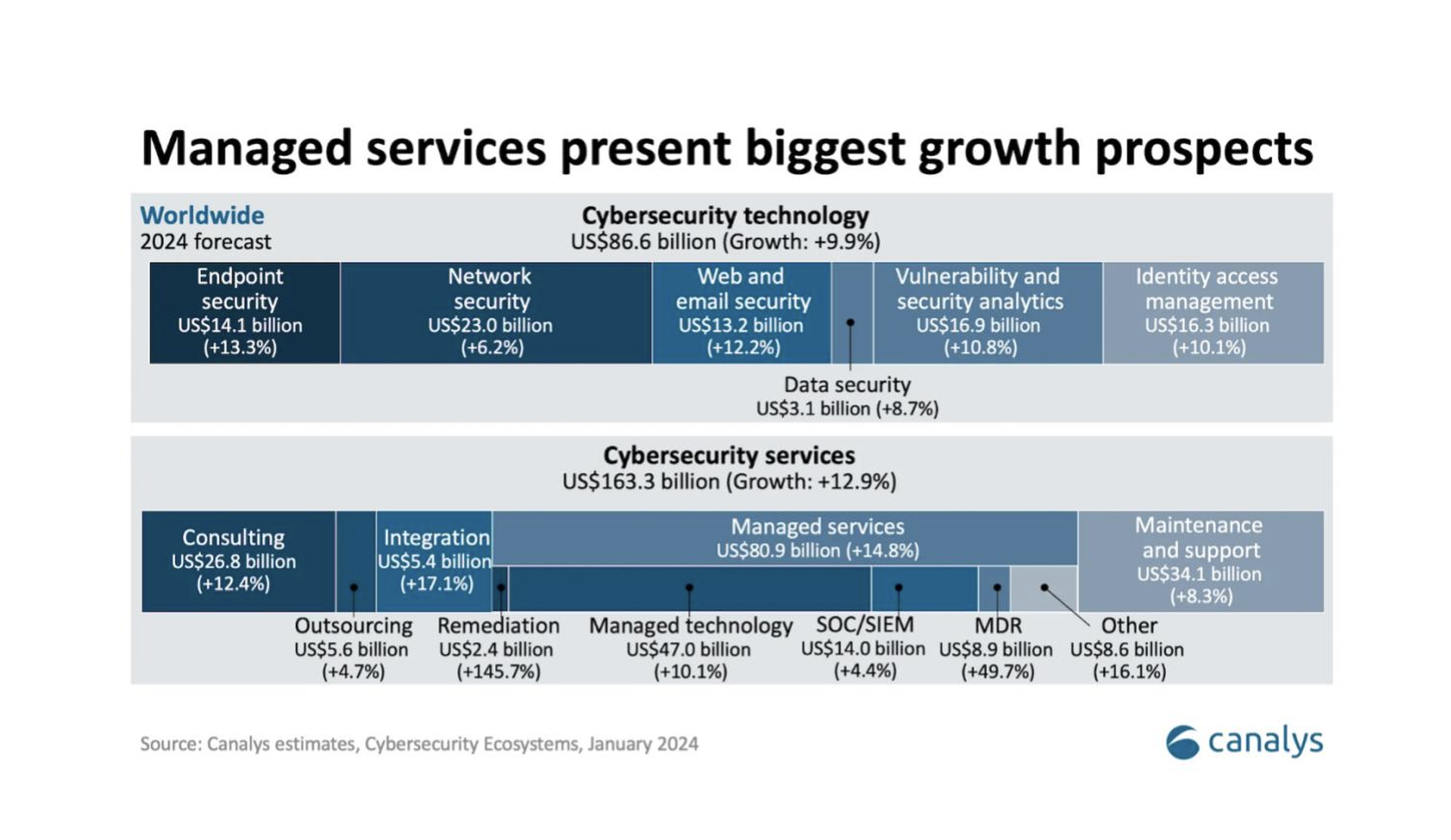Guest blog courtesy of ArmorPoint.
Every business today faces the threat of cyber attacks, and your clients are no exception. Given their trust in your IT management capabilities, it makes business sense to extend your services to include robust cybersecurity solutions. By establishing a comprehensive cybersecurity stack, you’ll help your clients build cyber resilience all while seizing a golden opportunity to grow your business.
Here’s how you can build a cybersecurity service stack that truly adds value to your client relationships and drives revenue.
8 Key Considerations Before Building Your Cybersecurity Service Stack
Strategically approaching the development of your cybersecurity service stack is essential, so be sure to keep these considerations in mind.
#1 - Analyze Market Demand
Assess the current market trends and the demand within the industries your clients operate. Identifying what specific cybersecurity needs are emerging can guide you to tailor your services to be more relevant and competitive.
- What are the most pressing cybersecurity concerns within the industries you serve?
#2 – Decide to Build or Outsource
Decide whether to develop your cybersecurity capabilities in-house or outsource them. This decision should be based on your team’s expertise, resource availability, and long-term business objectives.
- What are the core competencies of your existing team, and where are there gaps in expertise?
#3 – Form Strategic Vendor Partnerships
Align with vendors that not only offer cutting-edge technology but also provide marketing and sales support to help you promote your new offerings effectively.
- Which vendor partnerships can enhance your market offerings and customer satisfaction?
#4 – Keep Scalability in Mind
Choose solutions that scale seamlessly as your client base grows and as their needs become more complex. This foresight will prevent future disruptions and the need for frequent system overhauls as you expand.
- How will your cybersecurity solutions accommodate an increase in client volume and data load?
#5 - Examine Competitive Differentiation
Look for opportunities to differentiate your cybersecurity offerings from those of your competitors. Whether it’s through superior technology, better customer service, or additional features like compliance support, find your edge.
- What unique value propositions does your cybersecurity partner offer that competitors do not?
#6 - Define Revenue Goals
Set clear revenue targets for your cybersecurity services. Understand how these services fit into your overall business model and how they can drive growth and profitability.
- What are your financial expectations from your cybersecurity service offerings in the next one to three years?

#7 – Evaluate Investment vs. ROI:
Evaluate the costs of implementing and maintaining your cybersecurity stack against the expected ROI. Consider both direct revenues from new services and indirect benefits, such as improved customer retention and reduced churn due to enhanced security.
- What is the expected break-even point for the initial investment in cybersecurity technology?
#8 – Invest in Staff Training and Client Education
Invest in training for your staff to competently manage and support your cybersecurity offerings. Similarly, educate your clients about the risks and the protective measures you're enabling them with, which not only adds value but also builds trust.
- What training programs are essential for your staff to stay ahead in the cybersecurity field and does your cybersecurity partner offer any?

What to Include in Your Cybersecurity Service Stack
To truly enhance your cybersecurity offerings and drive significant revenue, it's crucial to develop a comprehensive service stack that addresses the diverse needs of your clients. Below are some essential cybersecurity services to consider that not only safeguard against threats but position your MSP as a cutting-edge provider in the cybersecurity industry.

Incorporate Security Information and Event Management (SIEM) and Security Operations Center (SOC) services into your cybersecurity offerings to offer comprehensive, real-time monitoring and analysis of security alerts generated within an organization's IT infrastructure. With the demand for continuous surveillance and threat management escalating, Managed SIEM and Managed SOC services are becoming indispensable for businesses looking to fortify their cybersecurity posture. Together, Managed SIEM and SOC services work hand in hand—SIEM detects threats, while the SOC actively defends against them—making both essential for a robust cybersecurity strategy.
Advanced Threat Protection
Go beyond traditional antivirus and firewall solutions by incorporating advanced threat protection (ATP) services that use AI and machine learning to detect and respond to threats in real time. With the endpoint security market rapidly growing, integrating advanced threat protection solutions helps identify subtle anomalies that may indicate sophisticated cyber-attacks, reducing the likelihood of significant breaches and minimizing the impact on your clients' operations.
Managed Detection and Response (MDR)
Offer MDR services to provide 24/7 monitoring, detection, and response capabilities. This segment is especially promising, with an expected growth rate of nearly 50%. By constantly analyzing data, MDR can quickly identify and mitigate threats before they cause harm. This service not only enhances your clients' security posture but also offers peace of mind, knowing that their networks are under continuous surveillance.
Security Awareness Training
Human error remains one of the largest vulnerabilities in cybersecurity. Offering ongoing training and simulation exercises can significantly mitigate this risk by educating employees about security best practices and emerging threats. Regular training sessions help cultivate a security-first culture within client organizations, reducing the likelihood of breaches caused by employee mistakes or negligence.

Conclusion
For MSPs, building a cybersecurity service stack is a strategic step toward tapping into a lucrative market and enhancing client relationships. By carefully considering how to align cybersecurity services with market needs and investing in the right technologies, partnerships, and training, MSPs can protect their clients against cyber threats and drive business growth.
Ready to start building a service stack that positions your MSP as a leader in the evolving cybersecurity landscape? Learn more about joining the ArmorPoint Partner Program today.




